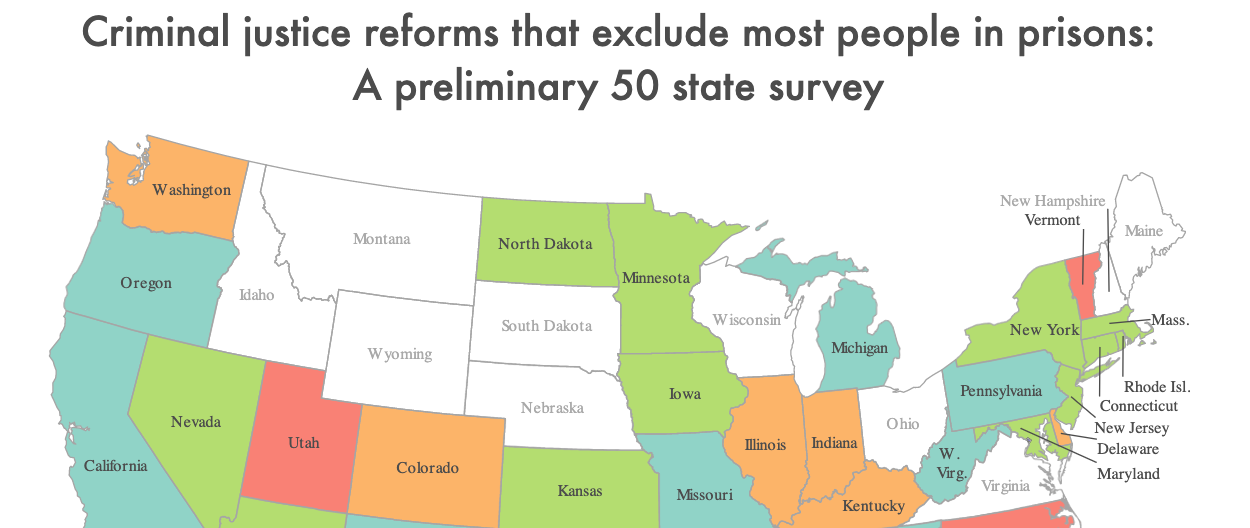New report, Reforms Without Results, lays out the case for including people convicted of violence in criminal justice reforms
The report includes an interactive map showing where people convicted of violence have been "carved out" of recent criminal justice reform laws.
April 7, 2020
As the threat of a COVID-19 disaster in U.S. prisons looms, people serving time for violent crimes may be most at risk, as states like California and Georgia exclude them from opportunities for rapid release. “Violent offenders” — even those who are old and frail — are being categorically denied protection in a pandemic.
Letting people convicted of violence apply for life-saving opportunities requires political courage, just as it has for decades. But denying relief to people based exclusively on their crime of conviction is as ineffective as it is unjust. In a new report, Reforms Without Results, we review the existing research on violent crime, explaining six major reasons why states should include people convicted of violence in criminal justice reforms:
- Long sentences do not deter violent crime.
- Most victims of violence, when asked, say they prefer holding people accountable through means other than prison, such as rehabilitative programs.
- People convicted of violent offenses have among the lowest rates of recidivism — belying the notion that they are “inherently” violent and a threat to public safety.
- People who commit violent crimes are often themselves victims of violence, and carry trauma that a prison sentence does nothing to address.
- People age out of violence, so decades-long sentences are not necessary for public safety.
- The health of a person’s community dramatically impacts their likelihood of eventually committing a violent crime — and community well-being can be improved through social investments rather than incarceration.
Demonstrating how common it is for people convicted of violence to be left behind, our report includes an interactive U.S. map showing 75 examples of state criminal justice reform laws that have excluded them. The map reveals that:
- At least 16 states have passed laws excluding people convicted of violent crimes from veterans’ courts, mental health courts, diversion programs, and other alternatives to incarceration.
- In at least 10 states, people convicted of violent crimes have been “carved out” of laws designed to ease the reentry process.
- At least 20 states have passed laws that expand parole, good time, and other mechanisms for early release — but offer no relief to people convicted of violent offenses.
Unless states are willing to change how they respond to violence, reducing U.S. incarceration rates to pre-1970s levels will be impossible: Over 40% of people in prison and jail are there because of a violent offense. Lawmakers serious about ending mass incarceration — or limiting the toll COVID-19 takes behind bars — can no longer afford to ignore people serving time for violent crimes. In Reforms Without Results, we provide the data and arguments they will need to craft more courageous and effective criminal justice reforms.
See the full report and interactive map at https://www.prisonpolicy.org/reports/violence.html.




